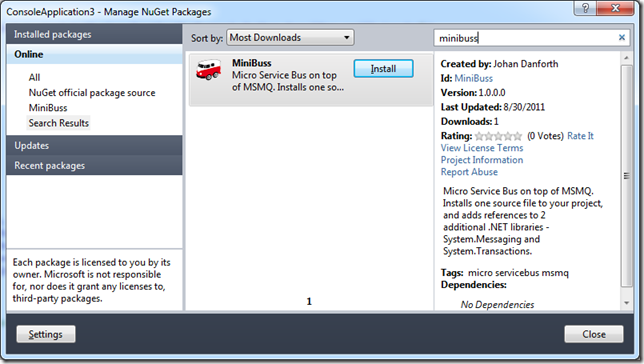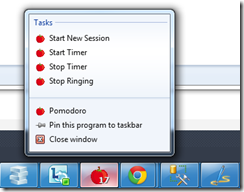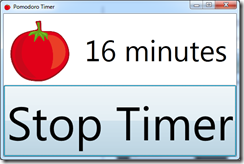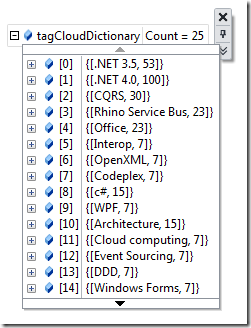Archives
-
MiniBuss on Codeplex
 The micro service bus framework for msmq called MiniBuss is now open source on Codeplex at http://minibuss.codeplex.com
The micro service bus framework for msmq called MiniBuss is now open source on Codeplex at http://minibuss.codeplex.comThere is also now a NuGet package available for easy install into projects:
If you’re interested in co-op on this project, please contact me via Codeplex! I’m looking for devs and tester who knows their c#, msmq and concurrency.
-
A One File .NET Micro Service Bus for MSMQ?
This last year our company has invested quite some time in looking at CQRS, which led to looking at great looking service-buses like nServiceBus, Rhino Service Bus and Mass Transit, which led me to do some bus-coding on my own, mostly for fun and for learning MSMQ.
Inspired by the service buses mentioned above, the result became a bare-bones-one-file “micro service bus” that I call MiniBuss which sits on top of MSMQ. The file itself is only some 400 lines of code and supports send, receive, reply, publish and subscribe/unsubscribe.
Setting up a sender may look something like this:
var bus = new MiniBuss.ServiceBus();
bus.RegisterMessageEndpoint<HelloCommand>("minibuss_receiver1@johan-dell-ssd");
bus.Start();
bus.Send(new HelloCommand { Guid = Guid.NewGuid(), Message = "Hello" });Create the bus, register a message and tell it where messages of this type should go, start the bus and send the message.
Setting up a receiver may look something like this:
var bus = new ServiceBus { LocalEndpoint = "minibuss_receiver1" };
bus.RegisterMessageHandler<HelloCommand>(command => Console.WriteLine(command.Message + " Guid: " + command.Guid));
bus.Start();Create the bus and tell it which endpoint to listen to (which creates a local MSMQ queue if necessary) and tell it which message type to listen for and which delegate to kick off when such a message is received.
Similarly, when doing a receive/reply, you would have to create the bus on the sender side with a local endpoint and register a message-handler for replies, like this:
var bus = new MiniBuss.ServiceBus { LocalEndpoint = "minibuss_sender1" };
bus.RegisterMessageEndpoint<HelloCommand>("minibuss_receiver1@johan-dell-ssd");
bus.RegisterMessageHandler<HelloResponse>(reply => Console.WriteLine("Reply from receiver: " + reply.Message));
bus.Start();
Console.WriteLine("Sending command...");
bus.Send(new HelloCommand { Guid = Guid.NewGuid(), Message = "Hello" });The receiver would do a bus.reply() like this:
var bus = new ServiceBus { LocalEndpoint = "minibuss_receiver1" };
bus.RegisterMessageHandler<HelloCommand>(command =>
{
Console.WriteLine(command.Message + " Guid: " + command.Guid);
bus.Reply(new HelloResponse { Guid = Guid.NewGuid(), Message = "Hello back!" });
});
bus.Start();The MiniBus also supports publish to multiple subscribers. A simple publisher would create a bus with a local endpoint (to receive subscribe/unsubscribe commands), tell it to handle subscriptions for a certain event, then start publishing something every 5 seconds (as an example):
var bus = new MiniBuss.ServiceBus { LocalEndpoint = "minibuss_publisher1" };
bus.HandleSubscriptionsFor<SomethingHappenedEvent>();
bus.Start();
Task.Factory.StartNew(() => PublishingThread(bus), TaskCreationOptions.LongRunning);
Console.WriteLine("Done, press ENTER to exit");
Console.ReadLine();private static void PublishingThread(MiniBuss.ServiceBus bus)
{
while (true)
{
Thread.Sleep(5000);
var guid = Guid.NewGuid();
Console.WriteLine("Publishing event with guid " + guid);
bus.Publish(new SomethingHappenedEvent() { Guid = guid, Sent = DateTime.Now });
}
}Any clients interesting in subscribing to events from the publisher would create a bus with a local endpoint, start the bus and then send a subscribe command to the publisher, telling it you’re interested in subscribing to a certain type of event and which delegate to handle it:
var bus = new MiniBuss.ServiceBus {LocalEndpoint = "minibuss_subscriber1"};
bus.Start();
bus.Subscribe<SomethingHappenedEvent>("minibuss_publisher1@localhost",
@event => Console.WriteLine("something happened at {0}, event id {1}",
@event.Sent, @event.Guid));
Console.WriteLine("Waiting for events, press ENTER to exit");
Console.ReadLine();
bus.UnSubscribe<SomethingHappenedEvent>("minibuss_publisher1");Now, the question is, what do you think? I know there are issues with the code, like how to make message-handlers multi-threaded/concurrent without messing things up (it’s single threaded right now), and how to best handle exceptions, rollbacks and re-tries . Right now handling exceptions in send and receive works pretty well within a TransactionScope() together with ADO.NET, and if there’s an exception, the message is moved the an error-queue. No re-try or anything, only rollback and move to xxx_error. Also, the publisher doesn’t persist subscriptions, so if it is restarted subscribers wouldn’t know. You know, things like that.
I’m a user of the micro-orm called Dapper and like it a lot, so I’m thinking that maybe I should release this micro-bus as open source and see where people may take it, if anywhere? Maybe just down the drain because they figure out this service bus is dangerous to use and risk loosing messages or something (which would be extremely good to know :)
Or maybe this code is useless because you already got nServiceBus and Rhino out there and coders don’t need another service bus?
What do you say?
-
Pomodoro Timer for the Windows 7 TaskBar
EDIT: The code is now open source on codeplex, on http://pomodorotaskbar.codeplex.com There's a new version available for download there too.
If you’re into the Pomodoro technique and looking for a pretty simple out-of-the-way timer which sits in the Windows 7 taskbar and is controlled from the Win7 JumpList, this one might be worth trying out.
NOTE: Icon overlays will NOT work if you're using small TaskBar icons!
That’s the timer looking like a tomato, with the remaining session minutes written out dynamically as icon overlay.
The timer has a couple of JumpList Tasks which you can use to control it. The program works well when “pinned” to the taskbar if you prefer it.
You can also control the timer from the main window with one large action-button (stop, start, stop ringing and restart session).
When the timer is stopped, you can just click on the remaining minutes-textbox and change the default session length to whatever you like. The value is stored.
When the session is ended, the window flashes, the tomato shakes and a ringing sound is played a few times to get your attention.
Note, this is a very simple program which I’m planning to release as open source when I’ve received some feedback. I prefer to keep it simple, but may add session logging. The name as well as the looks may change. .NET 4.0 is required.
Download the Pomodoro Timer: http://pomodorotaskbar.codeplex.com/releases/view/71998
-
Create Tag-Cloud from RSS Feed in ASP.NET MVC
Say you want to generate your own tag-cloud from a list of categories or tags you pull from an RSS-feed or similar. This is one way to do it. I’m using ASP.NET MVC for this sample which creates a simple tag-cloud in a Razor-view with HTML looking something like this:
The controller-code to start out with looks like this, where you read in the RSS-feed into a SyndicationFeed class, then pull out and flatten all the categories you have in that feed. Then group all those categories and count them to build up this simple view-model which is a Dictionary of category and percentage:
public class HomeController : Controller
{
public ActionResult Index()
{
//get feed
var feed = SyndicationFeed.Load(XmlReader.Create("http://blog.irm.se/blogs/MainFeed.aspx"));
//get flat list of all categories/tags in the feed
var categoriesList = feed.Items.SelectMany(item => item.Categories).Select(category => category.Name);
var categoryGroups = categoriesList.GroupBy(category => category);
decimal maxNrOfACategory = categoryGroups.Max(w => w.Count());
//build a dictionary with category/percentage of all categories
var tagCloudDictionary = new Dictionary<string, int>();
foreach (var tag in categoryGroups)
{
var percent = (tag.Count() / maxNrOfACategory) * 100;
tagCloudDictionary.Add(tag.Key, (int)percent);
}
return View(tagCloudDictionary);
}
}So now we got this view-model which is a Dictionary<string,int> and contains category/percentage data like this:
So all we need to do is create some kind of cloud in HTML or similar in the view. One way of doing it is this, which creates the output shown at the top:
@model Dictionary<string, int>
@{
ViewBag.Title = "Index";
}
<h2>Tag cloud</h2>
<div style="width: 400px; font-size: 25px;">
@foreach (var tag in Model)
{
<span style="font-size: @(tag.Value / 2 + 50)%; ">
@if (tag.Value > 10)
{
<span style=" font-weight: bold;">@tag.Key </span>
}
else
{
<span>@tag.Key </span>
}
</span>
}
</div>Obviously, to be able to click on a tag and so on you need to create a richer view-model, I just wanted to show how I grab and count the tags from the feed







